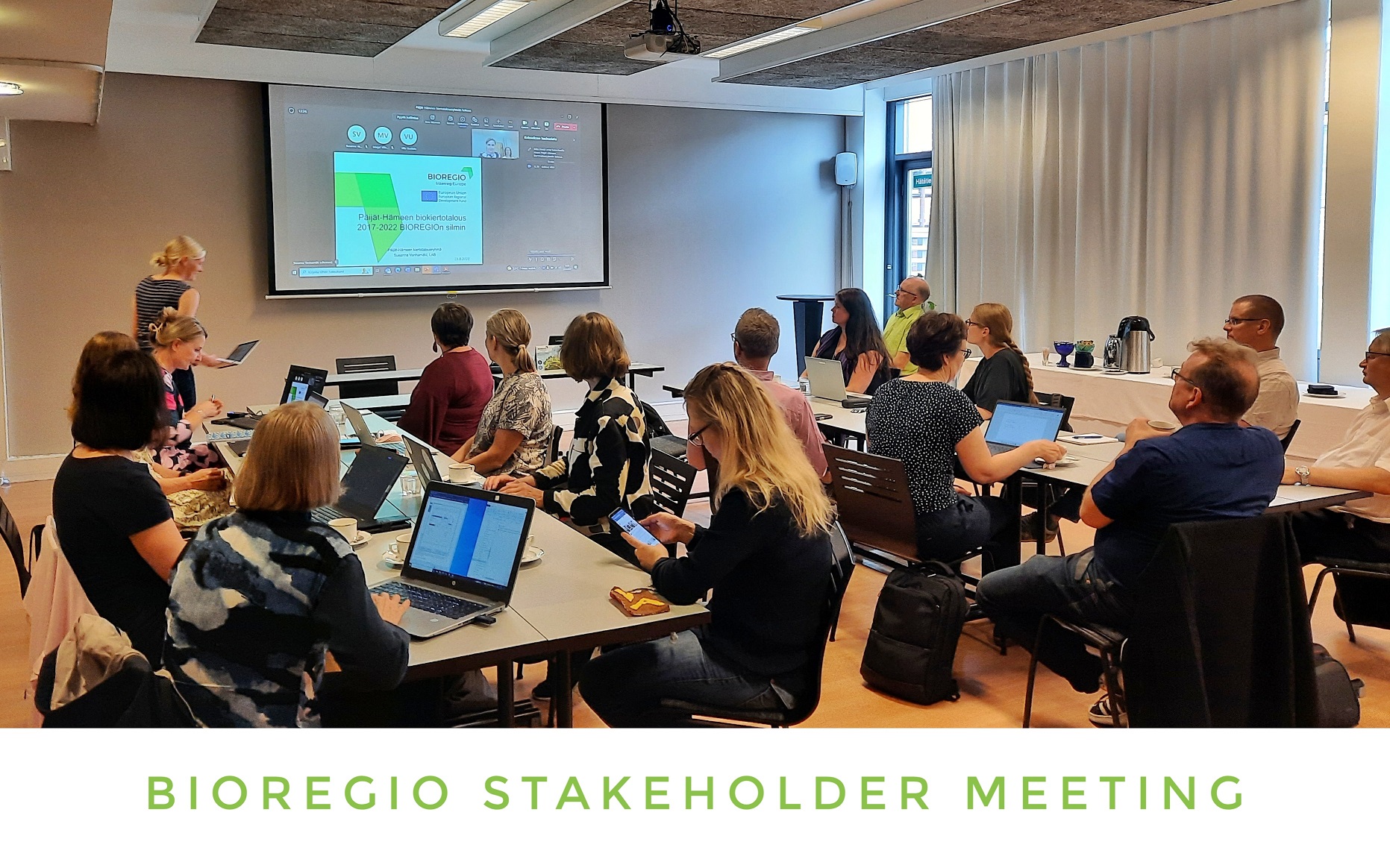
BIOREGIO Stakeholder Meeting in Lahti, Finland
BIOREGIO regional stakeholder group meeting in Lahti, Finland.
BIOREGIO boosts bio-based circular economy through transfer of expertise about best available technologies and cooperation models.
- cooperation models, e.g. ecosystems, networks, administrative cooperation,
- best available technologies, e.g. bio refinery, biogas production
€1,818,466.00
Environment and resource efficiency
BIOREGIO will improve knowledge related to circular economy of biological materials and strive to increase the recycling rates of these materials. The expertise of best available technologies, e.g. biorefinery, biogas production, and relevant cooperation models, e.g. ecosystems, networks and administrative cooperation, will be transferred. The project will share expertise and promote the possibilities for closing the loops of biological streams, e.g. develop the materials to be used as fertilizers and biofuels, instead of disposal.
As a result of BIOREGIO the regions will be better equipped to develop new policies and implement new technologies and cooperation models in order to move towards bio-based circular economy.
The focus is on the implementation of the policy instrument in the region of Päijät-Häme.
Priority axis 2: Producing and using the latest information and knowledge (ERDF);
Investment priority 4: Enhancing research and innovation (R&I) infrastructure and capacities to develop R&I excellence, and promoting centres of competence, in particular those of European interest
Specific priority 4.1.: Developing research, competence and innovation clusters that draw from regional strengths
The priority axis 2 implements, in line with the Europe 2020 strategy, strengthening research, technological development and innovation and supporting the shift towards a low-carbon economy. All measures are based on smart specialisation. The priorities/expected results are e.g new innovations, innovation clusters and R&D investments, improved R&D environments of applied research, new green economy business, investments, preconditions for renewing industrial value chains; exportable solutions in bioeconomy.
Circular economy and closing the loops of biological materials requires more attention:
In Southern Finland, there is great regional variation in R&D investments, the majority are directed to the large cities. However, in Päijät-Häme the investments in R&D remain under 1% of GDP.
Priority Axis 6 (PA 6) deals with environmental conservation and protection, and promoting resource efficiency. In relevance to the project, PA 6 includes the following:
Specific Objective 6.1.1. (SO 6.1.1) To implement waste separation and treatment, including: closing the loops actions; and both waste facilities and management plans.
The prior action relevant to close the loops of biological materials is the implementation of regional waste management plans (under revision). Both municipal and industrial waste streams are being analysed taking into account circular economy principles.
The Programme aims to boost economic development and create job opportunities in Central Macedonia. It contributes to achieving the Europe 2020 targets for smart, sustainable and inclusive growth, also in line with the smart specialisation strategy. It should create jobs and help SMEs to become more competitive and innovation-driven. EU funding will also contribute to meeting the requirements of the Union's acquis, in particular as regards greenhouse gas reduction in and increase energy efficiency.
The OP support will substantially contribute to promoting, among others, the following key EU and national development priorities:
The OP support will substantially contribute to promoting, among others, the following key EU and national development priorities:
Programme of economic and social development of Nitra Self-governing Region is the main instrument for strategic planning.
The policy instrument is in focus through the priority area „Environment“, strategic objective „Healthy environment“. The strategic objective focuses on environmental protection, support to climate change adaptation, risk prevention and management, more efficient use of resources and a switch to low-carbon economy. The 1st specific objective focus on reducing threats to environment, reducing waste and improveing low carbon economy. The aim of the 2nd specific objective is to introduce environment-friendly waste management system, implement infrastructure and separate collection of municipal waste and a higher rate of its re-use. Within the measure of ”More efficient waste management”, framework activities are suggested.
The policy instrument is not primarily Structural Funds tool. However, selected projects are cofinanced by Structural Funds.
The Regional Operational Programme 2014-2020 is one of the structural funds instruments for Romania and it is managed by the Ministry for Regional Development and Public Administration. It is based on an analysis of the social-economic situation of Romania’s regions and has as main objectives increasing the economic competitiveness and improving the living conditions of the communities by supporting the development of the business environment, of infrastructure and services, for the sustainable development of the regions, so that they can manage their resources efficiently and capitalize their innovation potential and assimilate the technological progress.
Regional Operational Programme: Priority Axis 1 - Promotion of Technological Transfer is in focus in the BIOREGIO project. It includes funding for creating and extending innovation and technological transfer units, consulting and technical assistance services, bidding platforms for intellectual property.
Thematic objective 1: Enhance research, technological development and innovation.
Investment priority 1a: Enhancing research and innovation (R&I) infrastructure and capacities to develop R&I excellence, and promoting centers of competence, in particular those of European interest.
Specific objective 1: Make up for a part of backwardness of the region in the fields of research and innovation related to smart specialization.
It is essential to continue efforts in the domain of R&D&I through means of smart specialization on the territory, which is in tune with the Europe 2020 Strategy. The region has a competitive advantage for such measures and the objective is to hoist it among the first in terms of R&I. The priorities are investments, emergence of advanced production technology for processing industry, food and bio-resources in terms of consumer expectations in agricultural production systems.
This will equally contribute to protection of natural environment through encouraging taking more responsibility for bio waste reduction, promoting different sort of production, improving the efficiency of bio waste recycling plants.

BIOREGIO regional stakeholder group meeting in Lahti, Finland.
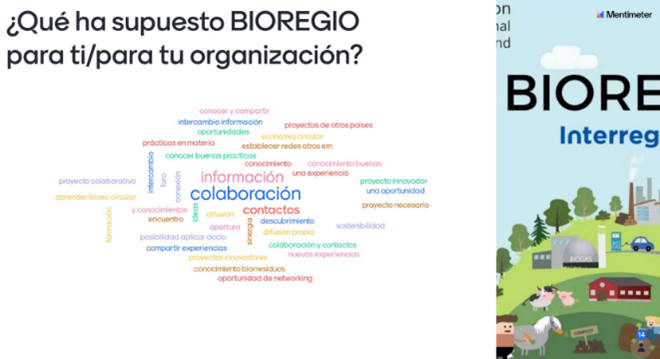
Circular Economy Strategy on Bioregio II -
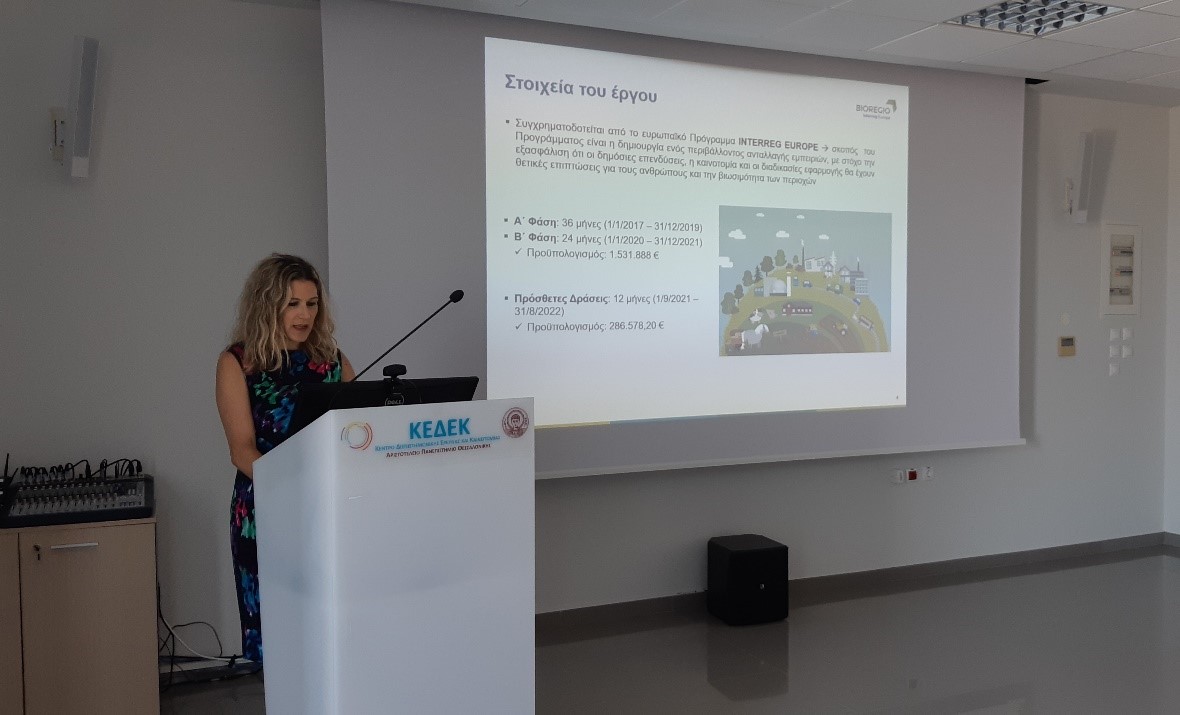
BIOREGIO 9th Local Stakeholders Group meeting in Thessaloniki, Greece
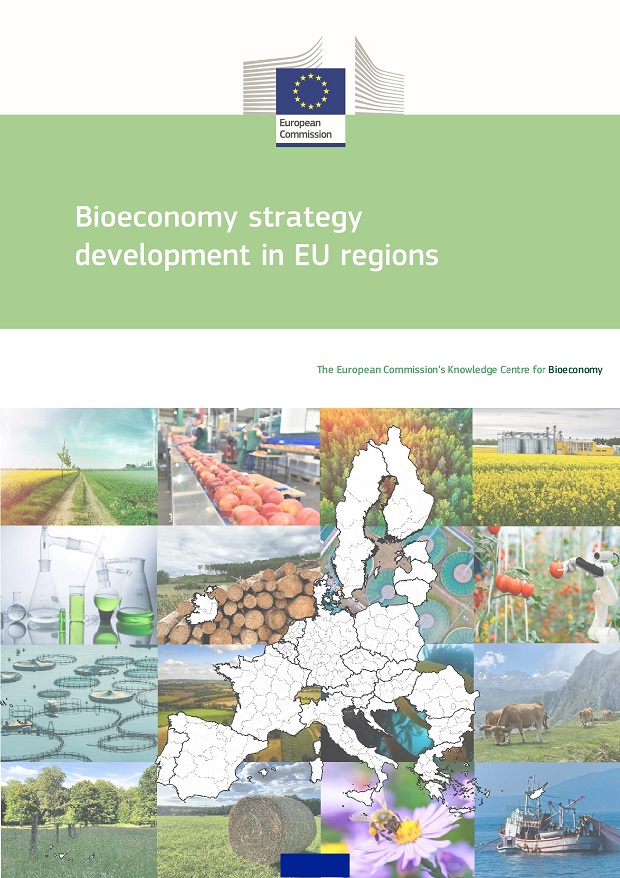
Bioeconomy strategy development in EU regions – The case of Region of Central Macedonia, Greece

BIOREGIO stakeholders meeting at the Green Week event in Romania, on the 31st of May.

Peers and experts discussing circular economy
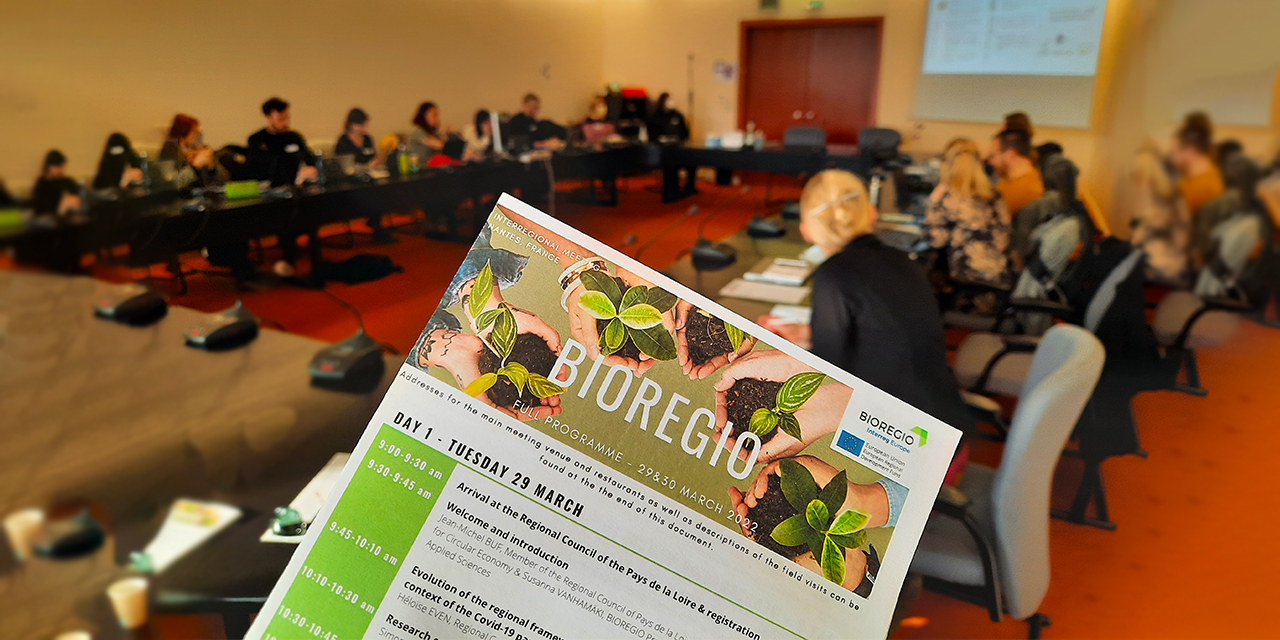
Policy development and support measures for circular economy in Päijät-Häme

Outcomes of the BIOREGIO interregional meeting in Nantes, France

Bio-based circular economy policy development in the Pays de la Loire Region, France

Overview of the bio-based circular economy policy situation in Romania